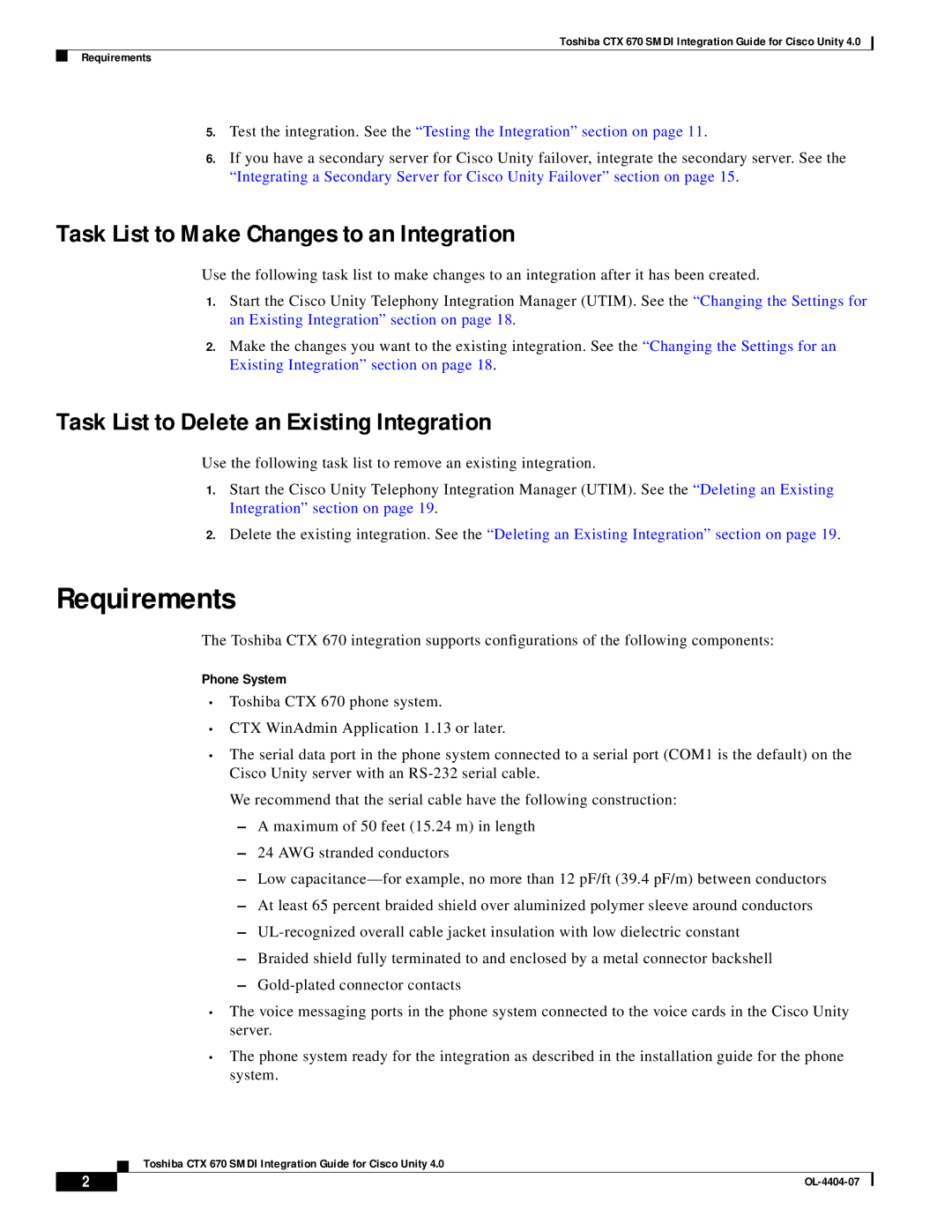
Toshiba CTX 670 SMDI Integration Guide for Cisco Unity 4.0
Requirements
5.Test the integration. See the “Testing the Integration” section on page 11 .
6.If you have a secondary server for Cisco Unity failover, integrate the secondary server. See the “Integrating a Secondary Server for Cisco Unity Failover” section on page 15 .
Task List to Make Changes to an Integration
Use the following task list to make changes to an integration after it has been created.
1.Start the Cisco Unity Telephony Integration Manager (UTIM). See the “Changing the Settings for an Existing Integration” section on page 18 .
2.Make the changes you want to the existing integration. See the “Changing the Settings for an Existing Integration” section on page 18 .
Task List to Delete an Existing Integration
Use the following task list to remove an existing integration.
1.Start the Cisco Unity Telephony Integration Manager (UTIM). See the “Deleting an Existing Integration” section on page 19 .
2.Delete the existing integration. See the “Deleting an Existing Integration” section on page 19 .
Requirements
The Toshiba CTX 670 integration supports configurations of the following components:
Phone System
•Toshiba CTX 670 phone system.
•CTX WinAdmin Application 1.13 or later.
•The serial data port in the phone system connected to a serial port (COM1 is the default) on the Cisco Unity server with an
We recommend that the serial cable have the following construction:
–A maximum of 50 feet (15.24 m) in length
–24 AWG stranded conductors
–Low
–At least 65 percent braided shield over aluminized polymer sleeve around conductors
–
–Braided shield fully terminated to and enclosed by a metal connector backshell
–
•The voice messaging ports in the phone system connected to the voice cards in the Cisco Unity server.
•The phone system ready for the integration as described in the installation guide for the phone system.
Toshiba CTX 670 SMDI Integration Guide for Cisco Unity 4.0
2 |
| |
|
